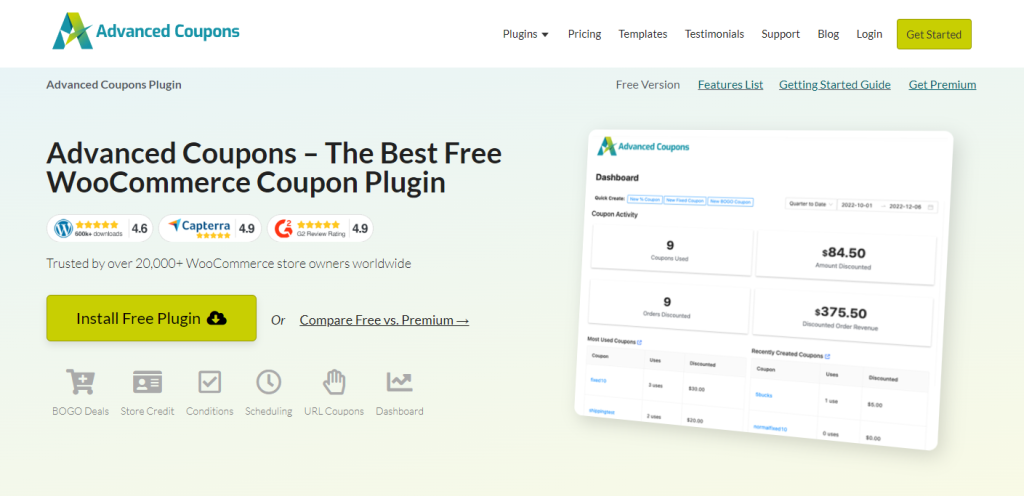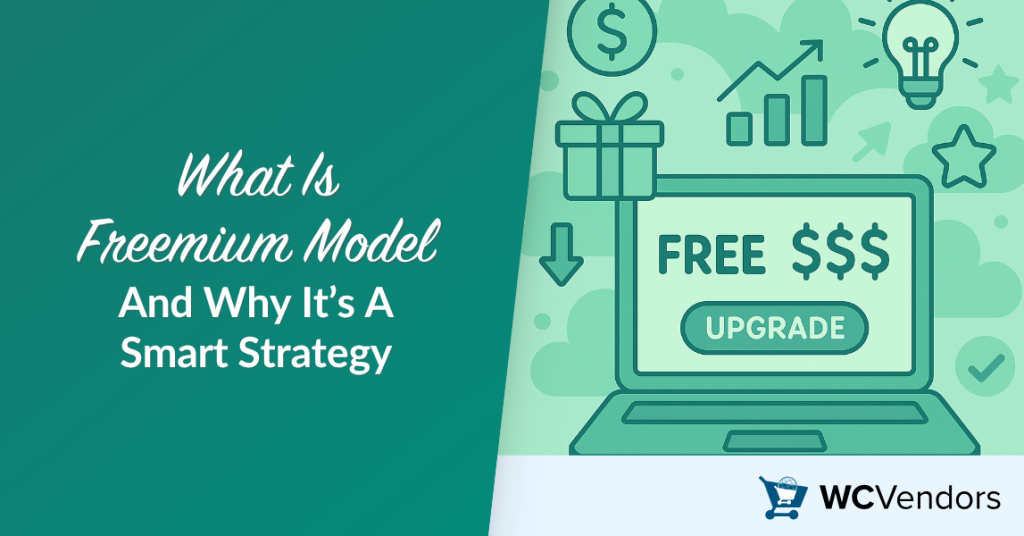
More businesses are changing how they deliver products online. A popular approach many are using is the freemium strategy. If you’ve been hearing the term and wondering what is freemium model supposed to look like—it’s worth understanding how it fits into today’s marketplaces and tools, especially when growth and flexibility matter.
This pricing strategy has become common across industries. From SaaS tools to WooCommerce multi-vendor marketplaces, the freemium business model helps attract users by removing the initial cost barrier. It opens the door to customer acquisition without a sales pitch.
But offering something for free doesn’t mean you’re giving away everything. When done right, freemium invites users in, builds trust, and guides them toward paid features that match their needs.
What Is Freemium Model?
What is freemium model, and why is it gaining traction? It’s a pricing model where users get basic access to a product or service for free, and pay only if they want more.
It’s not the same as a free trial. There’s no time limit. Free users can stay on the basic plan as long as they want. The business makes money by offering upgrades like extra tools, more flexibility, or support.
In this way, freemium is a business strategy focused on reach. You bring in as many people as possible, then convert a portion of them into paying customers.
Common upgrade options include:
- Premium support or faster response times
- Access to exclusive or advanced features
- More customization or usage limits removed
- Branding or ads removed for paid tiers
How Freemium Business Models Work
If you’re wondering what is freemium model and how it functions, it helps to understand the foundation: volume. Freemium business models are built on reaching large audiences.
Most users stay on the free plan, and that’s okay, as long as some users upgrade and cover the cost of the rest.
These models work best when the basic plan is helpful but incomplete. That balance matters. If free users get too much, they won’t upgrade. If they get too little, they won’t stick around.
You’ll typically see freemium in:
- SaaS products (e.g., project management, scheduling apps)
- Digital marketplaces
- Tools that improve over time or through repeated use
Advantages Of Freemium For Growing Your User Base
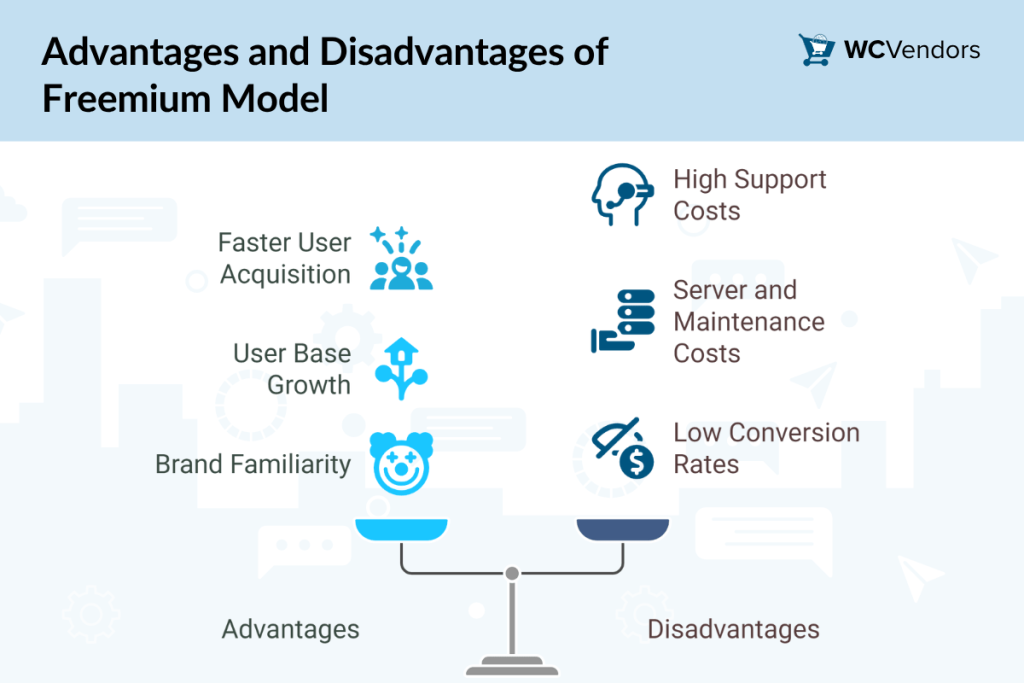
What is freemium model useful for? One big benefit is how it removes hesitation. When there’s no cost to try something, people are more likely to sign up.
This helps with:
- Customer acquisition: No barriers means faster adoption
- User base growth: Large numbers make it easier to test ideas and get feedback
- Brand familiarity: Users explore the product before making any commitment
Free users can explore the basic features. If they outgrow them, they move up to paid plans with advanced features. This smooth path is one of the biggest advantages of freemium.
It also allows you to:
- Learn from real user behavior
- Improve based on live feedback
- Build relationships before selling anything
Disadvantages Of The Freemium Strategy
Freemium sounds simple, but there are trade-offs. The cons of the freemium model aren’t always obvious at first.
Here’s what to watch out for:
- Support costs: Free users still need help, and that takes time
- Server and maintenance costs: Free usage still uses resources
- Low conversion rates: Not everyone will upgrade, even if they get value
Some freemium users may never pay. And if your paid plan isn’t compelling enough, your revenue won’t grow.
If you’re still asking what is freemium model and whether it’s right for you. Additionally, consider whether your business can support free users long enough to make upgrades worthwhile.
Freemium Vs Free Trial: Understanding The Difference
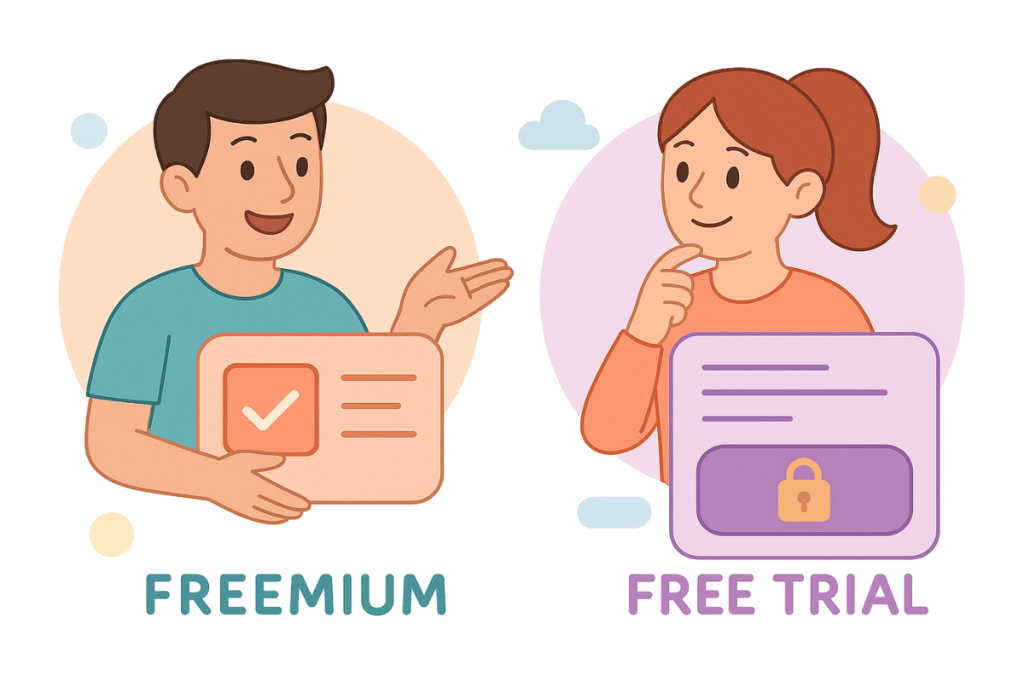
Freemium and free trial are often confused but they serve different goals.
- Free trial: Full access to all features for a short time, usually 7–14 days. After that, payment is required.
- Freemium: Limited access to core features with no expiration. Users can stay on the free plan indefinitely.
Use a free trial when your product delivers value quickly and users need to see the full experience to make a decision.
Choose freemium when you want users to get comfortable over time, with the option to upgrade when they’re ready.
Understanding what is freemium model—and how it compares to free trials—can help you make better decisions for your pricing strategy.
Implementing A Freemium Model In A WooCommerce Marketplace
For WooCommerce marketplace owners, freemium isn’t just possible—it’s effective.
You can let vendors start for free with limited functionality, then upgrade to unlock more control, visibility, or tools.
Examples of premium vendor features you might offer:
- More product listings or categories
- Custom commission rates
- Priority placement in search results
- Additional shipping or payment options
What is freemium model doing here? It’s helping you attract vendors without risk—and opening a path for future monetization.
Real Examples Of The Freemium Model in Action
Freemium works because it gives value first. It’s a common strategy in many plugins and tools serving WooCommerce marketplaces and online businesses. Examples include:
WC Vendors Free Plugin
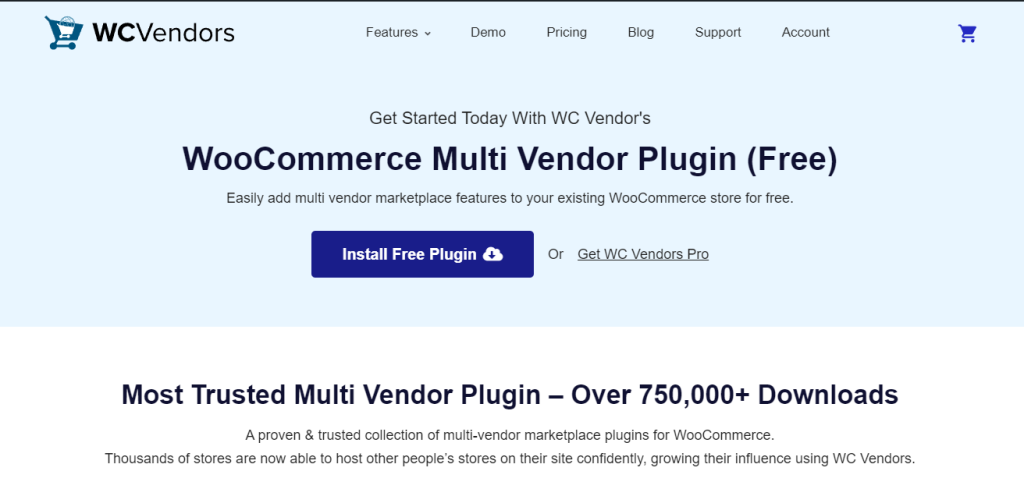
WC Vendors Free Plugin offers core marketplace functionality at no cost, allowing vendors to sign up and start selling without any upfront investment. The free version makes it easy to launch a basic marketplace quickly.
As vendors or marketplace owners grow, they often choose to upgrade to WC Vendors Pro, which adds premium features like advanced commission rules, vendor-only dashboards, and additional shipping and tax options.
This is a strong example of how freemium can create a smooth transition from entry-level tools to advanced capabilities.
Advanced Coupons Free Plugin
Advanced Coupons Free Plugin gives store owners powerful tools like BOGO deals and cart conditions at no cost. The premium version adds advanced features like URL coupons and auto-apply options, making it a natural step up.
AdTribes Product Feed Free Plugin
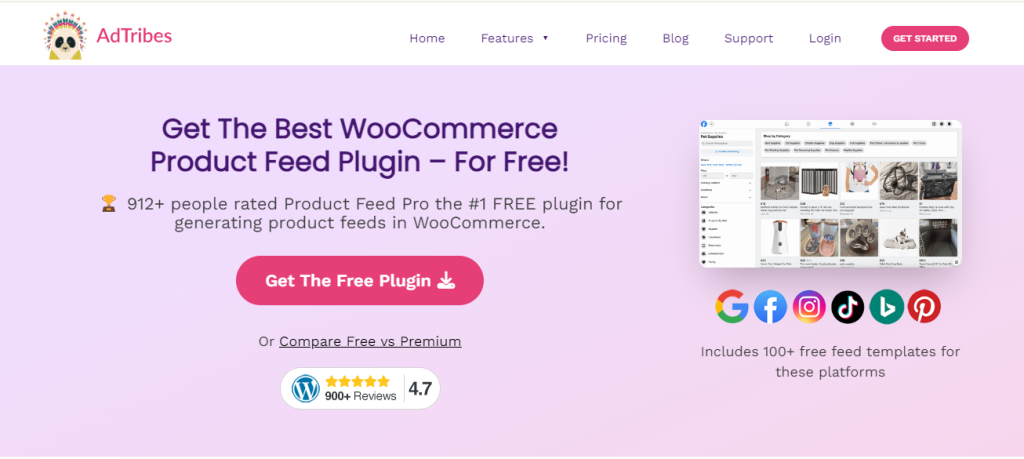
AdTribes Product Feed Free Plugin allows users to generate product feeds for platforms like Google Shopping. Its paid version supports more feed formats, filtering rules, and advanced customization. This is ideal for growing stores with complex marketing needs.
If you want to understand what is freemium model in real business terms, these tools are excellent examples of how to structure free and premium offerings effectively.
How To Turn Free Users Into Paid Customers
Getting signups is only the first step. The real challenge is encouraging upgrades.
Here are a few proven strategies:
- Make value clear: Show the difference between free and paid plans
- Use in-app prompts: Nudge users toward features just out of reach
- Limit non-essential support: Prioritize paid users without ignoring free ones
- Create urgency: Use limited-time offers or upgrade discounts
What is freemium model doing during this phase? It’s acting as a long-term funnel. Your goal is to guide free users gently toward conversion.
Track your conversion rates and experiment with what drives users to move up. A good freemium pricing strategy is flexible and adapts to user behavior.
Conclusion
Freemium isn’t a one-size-fits-all solution, but when aligned with your business goals, it can be an effective strategy for building trust, growing your audience, and driving long-term revenue.
To recap, here’s what you need to consider:
- What Is Freemium Model?
- How Freemium Business Models Work
- Advantages Of Freemium For Growing Your User Base
- Disadvantages Of The Freemium Strategy
- Freemium vs Free Trial: Understanding The Difference
- Implementing A Freemium Model In A WooCommerce Marketplace
- Real Examples of the Freemium Model in Action
- How To Turn Free Users Into Paid Customers
If you’re considering this approach for your marketplace, explore our plans and pricing or try out the features on our demo site. It’s the best way to see how freemium can work for your business in practice.
